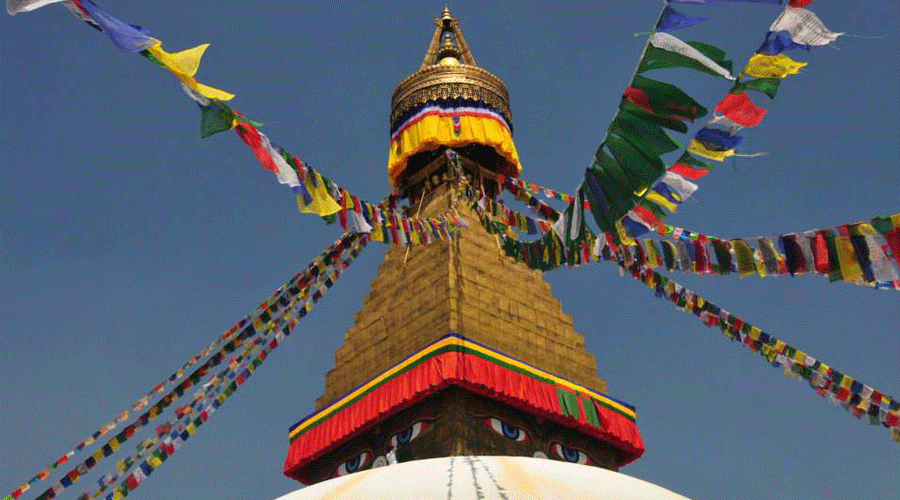The Himalayan country of Nepal is a destination that attracts visitors from all over the world. Trekkers and those interested in expeditions are especially attracted to the high peaks of the Himalayan Mountains. Nepal is the home of Mount Everest as well as 7 of the highest peaks in the world. Nepal is rich in natural resources and is a culturally diverse country as well. The many ethnic ...See more
The Himalayan country of Nepal is a destination that attracts visitors from all over the world. Trekkers and those interested in expeditions are especially attracted to the high peaks of the Himalayan Mountains. Nepal is the home of Mount Everest as well as 7 of the highest peaks in the world. Nepal is rich in natural resources and is a culturally diverse country as well. The many ethnic groups are composed of people of both Indian and Mongol extraction and there are over 36different languages spoken. The ethnic group that occupies the mountain region of the country is the Sherpa. The Sherpa people have a unique language similar to Tibetan, as well as their own customs, culture and religious traditions that are vastly different than those of the other groups in Nepal. They migrated from the Tibetan plateau centuries ago but have maintained their Buddhist tradition.
The biggest natural museum in the world
Nepal is one of the richest countries in the world in terms of bio-diversity due tool unique geographical position and latitudinal variation. The elevation of the country ranges from 60m above sea level to the highest point on earth, Mt. Everest at 8,848 m, all within a distance of 150 km with climatic conditions ranging from sub-tropical to arctic. This wild variation fosters an incredible variety of ecosystems, the greatest mountain range on earth, thick tropical jungles teeming with a wealth of wildlife, thundering rivers, forested hills and frozen valleys.
Within this spectacular geography is also one of the richest cultural landscapes anywhere. The country is a potpourri of ethnic groups and sub-groups who speak over 70 languages and dialects. Nepal offers an astonishing diversity of sightseeing attractions and adventure opportunities found nowhere else on the earth. And you can join in the numerous annual festivals that are celebrated throughout the year in traditional style highlighting enduring customs and beliefs.
Nepal-occupying only 0.1% of the earth-is home to:
- 2% of all the flowering plants in the world.
- 8% of the world's population of birds (more than 848 species).
- 4% of mammals on earth.
- 11 of the world's 14 families of butterflies (more than 500 species).
- 600 indigenous plant families.
- 319 species of exotic orchids.
Nepal at a Glance
Area: 147,181 sq. km
Geography: Situated between China in the north and India in the south.
Capital: Kathmandu
Population: 29.3 Million people
People: Nepal has more than 61 ethnic groups and 70 spoken languages.
Language: Nepali is the national language. However, travel-trade people Understand and speak English as well.
Currency: Nepalese Rupee (Approximately US$ 1 = Rs. 127. as of July 2022).
Political System: Democratic.
Religion: Nepal enjoys the distinction of being the only Hindu/ Buddhism country in the world. However, there is a harmonious Blending of Hinduism and Buddhism.
Geography: Nepal, a sovereign independent Kingdom, is bounded on the North by Tibetan Autonomous Region of the People's Republic of China, and on the east, south and west by India. The length of the Kingdom is 885 km east-west and its breadth varies from 145-241 km north-south. The country can be divided into three main geographical regions.
Himalayan Region:
The altitude of this region ranges between 4,877m. - 8,848m. It includes eight of the 14 highest summits in the world which exceed an altitude of 8,000m including Everest, Annapurna, Dhaulagiri and others.
Mountain Region:
This region accounts for about 68% of the total land area. It is formed by the Mahabharat range that soars up to 4,87m and the lower Churia range.
Terai Region:
The low-land Terai occupies about 17% of the total land of the country.
History:
Nepal has always been an independent and sovereign country with glorious history, culture and tradition that date back to time immemorial. Before the campaign of national integration was launched by King Prithivi Narayan Shah, the Great, the Kathmandu Valley was ruled by the Malla Kings, whose contributions to art and culture are indeed great and unique. In 1768 AD, the Shah dynasty ascended the throne of the unified Kingdom. King Gyanendra Bir Bikram Shah Dev was the last King in the Shah dynasty. The new Democratic Constitution of the Kingdom was promulgated on November 9, 1990 AD. Nepal is one of the founder members of South Asian Association for Regional Cooperation (SAARC).
People:
Nepal has a population of more than 22 million people made of different race and ethnic groups living in different regions, with diverse culture, languages and dialects. The Gurungs and Magars live mainly in the west. The Rais, Limbus and Sunwars inhabit the slopes and valleys of the eastern mid hills. The Sherpas live in the Himalayan region. The Newars constitute an important ethnic group of the capital valley-Kathmandu. There are Tharus, Yadavs, Satars, Rajvanshis and Dhimal in the Terai region. The Brahmins, Chettris and Thakuris are generally spread over all parts of the Himalayan country.


